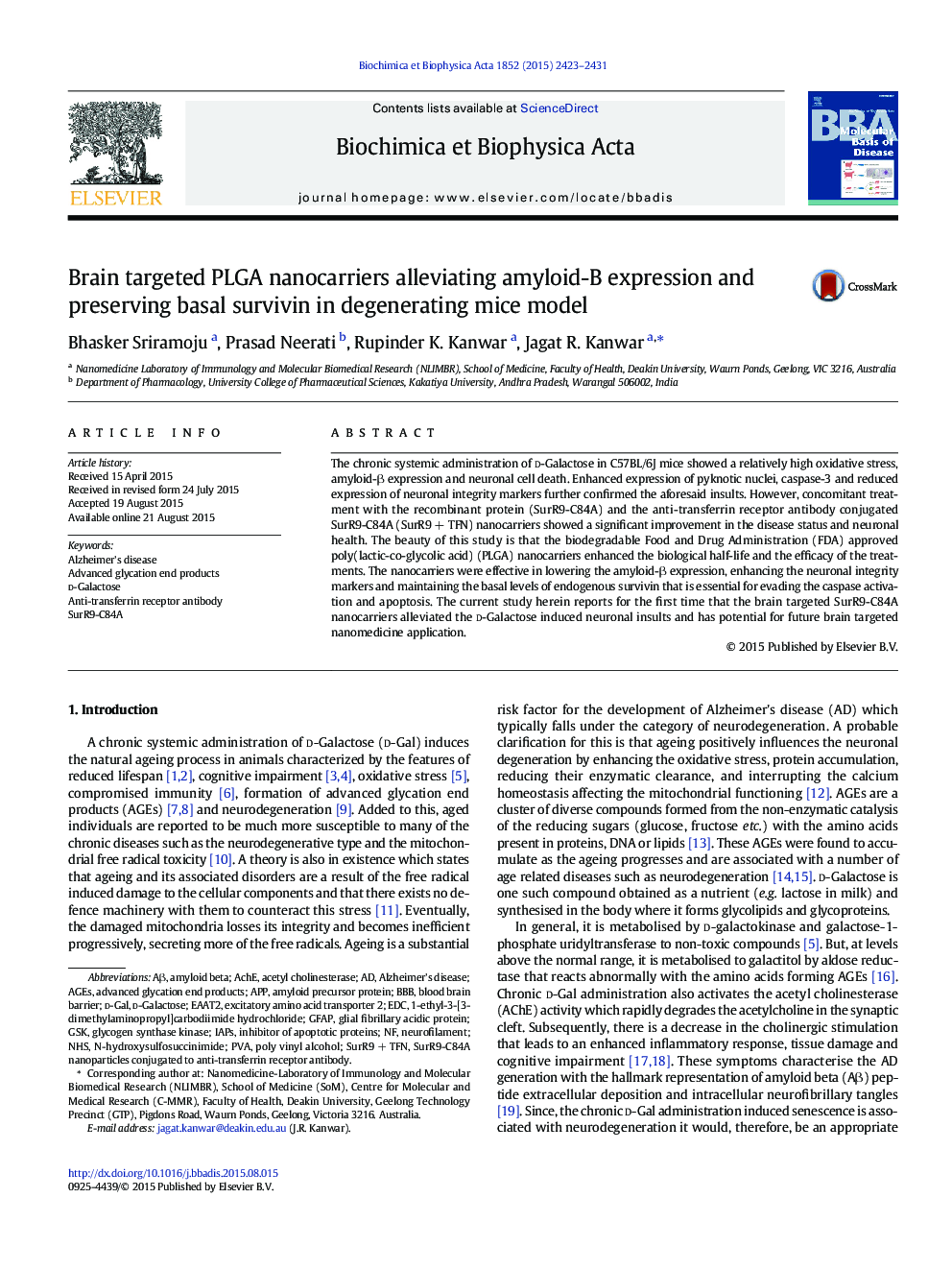| Article ID | Journal | Published Year | Pages | File Type |
|---|---|---|---|---|
| 1904552 | Biochimica et Biophysica Acta (BBA) - Molecular Basis of Disease | 2015 | 9 Pages |
•SurR9-C84A nanoparticles were protective against the neurodegenerative and toxic insults.•The nanoparticles prepared showed a size range of 150 nm ideal for crossing the blood brain barrier.•Treatments preserved basal levels of survivin expression essential for neuronal survival.•Treatments lowered amyloid-β expression and enhanced the neuronal integrity marker expression.
The chronic systemic administration of d-Galactose in C57BL/6J mice showed a relatively high oxidative stress, amyloid-β expression and neuronal cell death. Enhanced expression of pyknotic nuclei, caspase-3 and reduced expression of neuronal integrity markers further confirmed the aforesaid insults. However, concomitant treatment with the recombinant protein (SurR9-C84A) and the anti-transferrin receptor antibody conjugated SurR9-C84A (SurR9 + TFN) nanocarriers showed a significant improvement in the disease status and neuronal health. The beauty of this study is that the biodegradable Food and Drug Administration (FDA) approved poly(lactic-co-glycolic acid) (PLGA) nanocarriers enhanced the biological half-life and the efficacy of the treatments. The nanocarriers were effective in lowering the amyloid-β expression, enhancing the neuronal integrity markers and maintaining the basal levels of endogenous survivin that is essential for evading the caspase activation and apoptosis. The current study herein reports for the first time that the brain targeted SurR9-C84A nanocarriers alleviated the d-Galactose induced neuronal insults and has potential for future brain targeted nanomedicine application.
Graphical abstractFigure optionsDownload full-size imageDownload high-quality image (393 K)Download as PowerPoint slide
